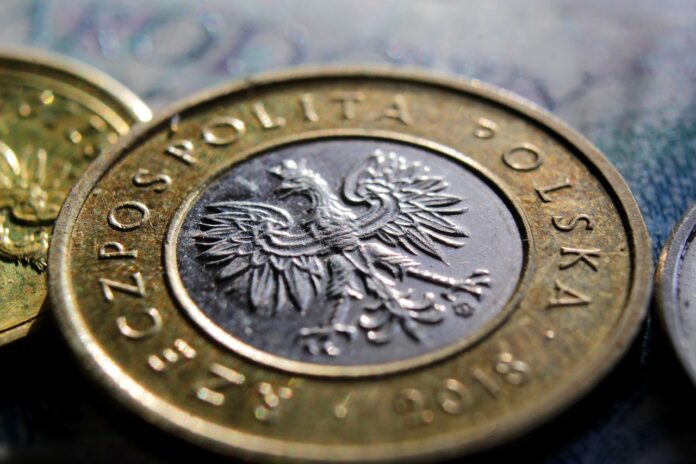The dynamics of price growth in stores continues to decline. However, experts are unable to determine whether this trend will continue. They claim that there are currently many factors in the market which complicate forecasts in this area. This includes the weakening of the Polish zloty, the raw material situation, and the increase in the minimum wage in 2024. These issues are compounded by election promises made by politicians. These are largely concerning for the retail market, as they could ultimately lead to increases in prices. According to experts, even if inflation in September or October drops to a single-digit value, the economy will certainly cost us for the aforementioned promises. And, as always, consumers will feel this the most.
According to the latest report titled “INDEX OF PRICES IN RETAIL STORES,” in August, prices in stores, including food and beverages, increased by an average of 12.4% year-on-year. Similar data is provided by the ASM Sales Force Agency in the “Shopping Basket”, and also by the Central Statistical Office (CSO). The CSO also published a quick estimate for September at the end of the third quarter, which showed that food and non-alcoholic beverages had risen year on year by 10.3%.
Dr. Artur Fiks from WSB Merito University notes that the drop in price growth dynamics in stores to a level of 12.4% or even 10.3% year-on-year shows that the trend continues, but it’s hard to say if this will also be the case in the future. This could be affected or slowed down by a decrease in interest rates. Although forecasts indicate that the dynamics of price growth will continue to decline in the coming months, undue interest in loans could lead to an increase in demand in certain categories, and even faster price growth than in recent months. Dr. Anna Semmerling from WSB Merito University also believes that in the coming months, the brake on price growth dynamics will continue, but the base is already so high that a decrease in inflation does not have to mean that nominally prices will grow at a slower rate.
“The observation of prices in stores shows that more and more product groups are no longer seeing such high increases as in previous months, and even price drops can be observed. Most inflation scenarios assume that at the end of the year, food prices will be growing at a single-digit rate. However, we must not forget that we are still far from a 2.5% inflation target. And such a situation only allows for stable budget planning,” explains Dr. Semmerling.
However, inflation movement is perceived differently by Dr. Maria Andrzej Faliński, former general director of the Polish Organization of Trade and Distribution. He doubts that the rate of inflation decrease, and further – the prices of specific products – will continue. The expert expects that even if the September or October inflation reading is single-digit, the trend will change. This will be due to decisions of the Monetary Policy Council, increases in fuel and energy prices, developing social programs by politicians, and raising salaries. Simply put, fiscal pressure will force companies to raise prices.
“New costs translate into the necessity to raise prices. We cannot count on KP funds, nor much for company development. After the season, the supply of plant products increased, which was conducive to promotions and lower prices, but rebuilding the offer entails the necessity to incur expenses, which in turn will raise prices in stores. It will get more expensive, including fats, flour, and other powder products, as well as meat and dairy, because the demand for feed will increase before winter. Furthermore, we are still struggling with Ukrainian grain. Warehouses are being emptied too slowly, which results in additional costs for farmers,” lists Dr. Faliński.
Robert Biegaj, a retail market expert from the Offerista Group, also warns against a similar scenario. He points out that the election campaign is ongoing. Its natural element includes various announcements and promises, which are partly simply dangerous. They could lead to price increases or market upheaval. It may not happen immediately, but it definitely may happen within a year. The expert adds that even if inflation falls to a single-digit figure in September or October, the economy will certainly cost us dearly for these promises. And, as always, ordinary consumers will feel it the most. Meanwhile, Piotr Kuczyński, chief analyst of the company Xelion, says that two basic things are certain. Firstly, we are in a phase of disinflation. And secondly, inflation will continue to fall by the end of the year.
“This, of course, doesn’t mean that prices will fall. Even if they stay in place, inflation will decrease because we compare this year’s prices with those of last year. Last year’s inflation was very high, amounting to over 18 percent in February. So we had a very high base. Even if prices remain the same, the ratio of this year’s pricing to last year’s will decrease,” explains Kuczyński. He also reminds us that the minimum wage will increase in January, and all parties competing in the elections are announcing wage increases in the budget sector. We will earn more, but it will certainly be reflected in higher prices. “We also do not know what commodity prices will look like. I do not expect inflation to be controlled next year,” adds Piotr Kuczyński.
Professor Elżbieta Mączyńska also draws attention to the uncertainty associated with the rising minimum wage. However, she highlights that we need to look at it from two perspectives. The necessity to raise salaries is a challenge primarily for SME entrepreneurs. At the same time, the economist reminds us that past experiences show that raising the minimum wage does not worsen the situation in the economy. As a result, more money ends up in the wallets of employees, which translates into demand. The expert also believes that we are coming off the peak of high prices, but this is a long-term process.
“There are still many doubts, also on a global scale. We are dealing with the weakening of the Złoty, import is getting more expensive because we have to pay more for each unit of foreign currency. Not only food, but also energy resources, including oil and gas, for which we pay in euros or dollars, will be more expensive in relation to the weakening of the Polish currency and this will last until the Złoty strengthens. Various uncertainties will occur in retail trade, which will result in the fact that inflation will be decreasing, but it’s hard to tell how much at this point,” says Professor Mączyńska.
When asked about how prices might change in stores, the expert from the Offerista Group summarizes that the situation is quite dynamic, with a strong indication of uncertainty. The election campaign is entering a decisive phase and many things can still happen, including negative ones. And the fact that the dynamics of price growth in stores will continue to decrease is not so obvious. In addition to this, Robert Biegaj adds that the producer market, especially the one related to food, feels seriously threatened, mostly regarding wage increases, but also the prices of raw materials. The situation itself, according to the expert, will clarify one way or the other just after the elections. Depending on which political option comes to power, the markets will either calm down or become even more shaken.


















